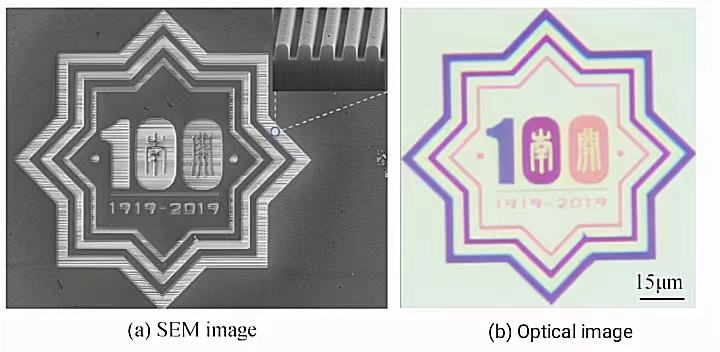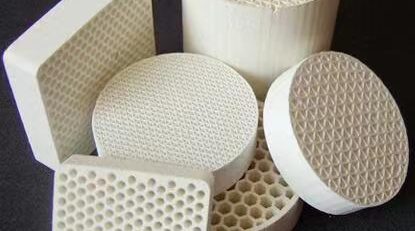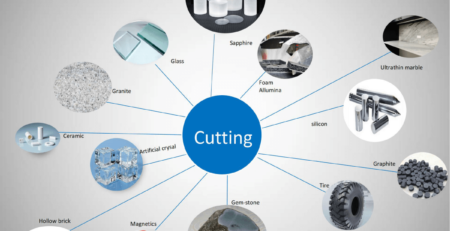3 minutes to understand lithium niobate crystal(2)
Main applications of lithium niobate crystals
(1) Piezoelectric application
Lithium niobate crystal has high Curie temperature, small temperature coefficient of piezoelectric effect, high electromechanical coupling coefficient, low dielectric loss, stable physical and chemical properties of crystal, good processing performance, and easy to prepare large-sized and high-quality crystals. It is an excellent piezoelectric crystal material.
Compared with the commonly used piezoelectric crystal quartz, lithium niobate crystal has a high sound speed, which can prepare high-frequency devices.
Therefore, lithium niobate crystals can be used in resonators, transducers, delay lines, filters, etc., and in civil fields such as mobile communications, satellite communications, digital signal processing, television, broadcasting, radar, remote sensing and telemetry, as well as electronic countermeasures, fuzes, guidance and other military fields, one of the most widely used is the surface acoustic wave filter (SAWF).

2.4 GHz surface acoustic filter (SAW) on the left; small SAW duplexer on the right
(2) Optical applications
In addition to the piezoelectric effect, the photoelectric effect of lithium niobate crystal is very rich, among which the electro-optic effect and nonlinear optical effect have outstanding performance and are also the most widely used.
Moreover, lithium niobate crystals can prepare high-quality optical waveguides through proton exchange or titanium diffusion, and can also prepare periodically polarized crystals through polarization inversion.
Therefore, it has been widely used in electro-optical modulators, phase modulators, integrated optical switches, electro-optical Q-switches, electro-optical deflection, high-voltage sensors, wavefront detection, optical parametric oscillators, and ferroelectric superlattices.
In addition, applications based on lithium niobate crystals such as birefringent wedges, holographic optics, infrared pyroelectric detectors, and erbium-doped waveguide lasers have also been reported.

Lithium Niobate Electro-Optical Modulator
(3) Dielectric Superlattices
In 1962, Armstrong et al. first proposed the concept of Quasi-Phase-Match (QPM, Quasi-Phase-Match), which uses the inverted lattice vector provided by the superlattice to compensate for the phase mismatch in the optical parametric process.
The polarization direction of the ferroelectric determines the sign of the nonlinear polarizability χ2. The ferroelectric domain structure with the opposite periodic polarization direction can be prepared in the ferroelectric to realize the quasi-phase matching technology, including lithium niobate and lithium tantalate, potassium titanyl phosphate and other crystals can be prepared periodically polarized crystals, among them, lithium niobate crystal is the earliest and most widely used material in the preparation and application of this technology.
The initial application of periodically polarized lithium niobate crystals is mainly considered to be applied to laser frequency conversion. In 2014, Jin et al. designed an optical superlattice integrated photonic chip based on a reconfigurable lithium niobate waveguide optical path, and realized the efficient generation of entangled photons and high-speed electro-optic modulation on the chip for the first time.
It can be said that the proposal and development of dielectric superlattice theory has pushed the application of lithium niobate and other ferroelectric crystals to a new level. It has important application prospects in all-solid-state lasers, optical frequency combs, laser pulse compression, beam shaping, and entangled light sources in quantum communications.
Prospect of Lithium Niobate Crystal
(1) Acoustic application
The current fifth-generation mobile communication network (5G) deployment includes the sub-6G frequency band of 3~5 GHz and the millimeter wave frequency band above 24 GHz. The increase in communication frequency not only requires that the piezoelectric properties of crystalline materials can be satisfied, but also requires thinner wafers and smaller interdigital electrode spacing, and the fabrication process of devices is greatly challenged.
Therefore, in the 4G era and before, the surface acoustic filters widely used in lithium niobate crystals and lithium tantalate crystals are facing the competition of bulk acoustic wave devices (BAW) and thin film cavity acoustic resonators (FBAR) in the 5G era. .
Lithium niobate crystals have made rapid progress in higher frequency filters, and materials and device fabrication techniques still show great potential. With the development of lithium niobate single crystal thin film materials and new acoustic device technologies, as one of the core devices of future 5G communications, front-end RF filters based on lithium niobate crystals have important application prospects.
(2) Optical communication applications
Optical modulators are the key components of high-speed optical communication networks. The future requirements for lithium niobate electro-optical modulators include higher modulation rates, miniaturization and integration.
At present, the lithium niobate electro-optical modulators used in commercial applications are mainly 40/100 Gbps, and higher rate lithium niobate modulators have been developed. For example, in 2017, Fujitsu released a 600 Gbps lithium niobate electro-optical modulator. At present, 400 Gbps and 600 Gbps products are gradually entering the market.
Optical communication technology is an important part of the construction of the fifth-generation mobile communication network, and the lithium niobate electro-optical modulator, as the core device, will also usher in greater development.
(3) Photonic integrated chip
Photons have been widely used in high-capacity communication, optical storage, information transmission, information processing, detection and other fields. Like the development of electronics from discrete components to integrated circuits, the requirements for miniaturization, integration, low power consumption, modularization, intelligence and high reliability of photonics devices are getting higher and higher. Replaces discrete optics.
The development of integrated photonics chips in the early stage was mainly driven by the demand for optical communication, and researches were carried out around silicon-based photonics and indium phosphide-based integration.
Silicon-based photonics integrated chips have developed rapidly because of the huge mature semiconductor material and process technology system, but silicon-based laser preparation technology has always been a shortcoming, and currently relies on mixed integration with indium phosphide; Some indium phosphide integrated photonic chips have been commercialized, and their performance is better than silicon-based photonics integrated chips, but they lack a general process platform like silicon, and the process technology is complex and expensive.
Lithium niobate-based integrated photonics research, which is driven by the demand for optical communication, mainly focuses on Mach-Zehnder interference light modulators, phase modulators, and integrated optical switches.
In addition to the demand for integrated photonics in the field of optical communication, the future demand for photonics-based optical quantum information processing, optical computing, biosensing, imaging detection, signal processing, storage, 3D display, etc. The hybrid integration scheme is difficult to apply.
From the perspective of single technology development, almost all photonic components have been realized based on lithium niobate crystals, including:
- Mode-locked lasers, Q-switched lasers and optical amplifiers realized by rare earth doping;
- Optical waveguides realized by titanium diffusion and proton exchange, as well as integrated optical switches, optical crossovers, optical couplings, and single-photon detection;
- Intensity, phase and polarization modulation, wavefront detection and optical pulse selection, etc., realized by electro-optic effect;
- Optical frequency conversion and quantum entangled photon generation realized by nonlinear optical effects;
- Gratings, holographic storage, phase conjugators, spatial light modulators, etc. realized by photorefractive effect;
- New devices such as all-optical logic gates, half adders, and frequency combs developed from lithium niobate photonic crystals and lithium niobate optical microcavities;
- The mutual conversion and sensing of force, heat, light and other signals are realized through piezoelectric effect, pyroelectric effect, and photoelastic effect.
In the currently developed optoelectronic material system, it is rare to develop so many basic optical components, photonics devices and optoelectronic devices based on the same host material. This also makes people full of expectations that lithium niobate crystals will play a more important role in the development of integrated photonics chips in the future.

Ultra-surface micro-nano structure prepared by lithium niobate crystals (Source: Nankai University)
Lithium niobate crystals integrate a variety of optoelectronic properties and can meet practical performance requirements, which are very rare in optoelectronic materials. With the development and improvement of core technologies such as the theory, preparation and application of lithium niobate crystal integrated photonics chips, lithium niobate crystal has become an “optical silicon” material in the photonic era, providing a strategic foundation for the development of integrated photonics.
If you need any questions related to optical crystal cutting, please leave a message, reply immediately after receiving the message.




